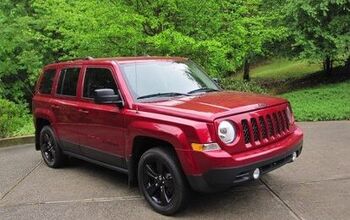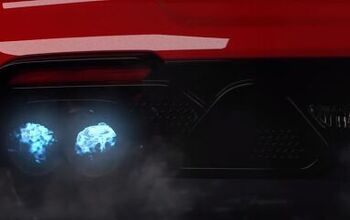Ur-Turn: In Defense Of The Ford GT
A Ford engineer responds to our last piece on the Ford GT.
In “Ur-Turn: The Hater’s Guide to the Ford GT”, we get a glimpse into the Ford product development cycle for high-volume vehicles. The authors, who humbly claim that it was a broad overview, give a rather complete account of the roles, responsibilities, and procedures behind nearly every Ford product that comes to market. It’s a fascinating process, and it occurs every day at virtually every OEM and supplier. But what happens when a particular design or system defies convention? How do you validate something that is unlike anything your company has ever produced? What happens when you push the product development envelope so far, that you enter a completely new and unfamiliar design space? This is where we’ll find the Ford GT.
The GPDS framework that the authors describe is a rigorous process, combining elements of classical engineering disciplines, statistical analysis, and historical lessons-learned. Every high-volume OEM and supplier uses something like it. The people behind GPDS and other, similar processes are the reason for today’s automotive landscape of massively complex cars that are safer, more efficient, and more advanced than ever.
As robust and comprehensive as GPDS is, it can be inflexible. New technology and processes sometimes don’t fit into the framework. If a body control D&R has never worked with active aerodynamic elements, how will he know what acceptable performance looks like on the GT, or how to test it? If the STA has never dealt with a carbon fiber monocoque, how can he point out faults in the assembly process? If the engine calibrator has never tried to achieve the cylinder pressure required to wring 600 horsepower out of 3.5L, how will he know how much fuel to dial in without blowing the head apart? What about the APQP engineer who depends on Weibull analysis to predict full-life durability, but the sample size needed for a good analysis is about the same as the entire production run?
The Ford GT is unlike anything that Ford has ever built, so the paradigms that work for nearly every Ford product may not work here. Technology must be developed outside the GPDS framework. The Ford Research and Advanced Engineering group does just this, using GTDS (Global Technology Development System). Unlike GPDS, which is focused on execution and quality, the GTDS process attempts to clearly define a problem and systematically identify and explore promising solutions. The outcome of the GTDS process is a technology that is ready for use in a vehicle, and accompanied by a complete set of requirements and validation methods as well as a list of potential suppliers. Often a GTDS technology is so complex that transferring knowledge to a production team would be prohibitively time-consuming, so an R&A engineer will accompany the technology through to production.
This is the true skunkworks. It’s not in a secret basement, its right out in the open, just a short walk from the folks cranking through GPDS documentation. As for the contention that non-GPDS projects will have a “questionable pedigree in production and quality operating systems”, the people at Ford R&A have a better understanding of the operating environment and system behavior than anybody else in the company and sometimes the entire industry, as well as the manufacturing methods and quality issues associated with them. The evaluation of technology is obsessively comprehensive, even if it doesn’t follow the GPDS framework. There is nothing “slap-dash” about it.
The authors accurately point out that the GT is essentially a marketing exercise, not a money maker. Doing all the development work in-house would take precious resources away from profitable production programs. So the build will be contracted to an outside company like Multimatic. Dyno testing and calibration will probably be done by a company like Roush. Chassis development will likely be performed by Ford drivers and engineers, though with a much narrower scope of testing than high-volume vehicles get. But Ford will own every part of the design and development process. It just won’t be the same people who put F-150s on the showroom floor. Instead it will fall to a group whose job it is to bring new technology to life and make it available to a discriminating customer. There will be no clear path to follow. And that’s just how they like it.
More by Ur-Turn
Latest Car Reviews
Read moreLatest Product Reviews
Read moreRecent Comments
- THX1136 That's so cool. This one is close to what I had accumulated with the 84 Shelby Charger I owned. Since it only had a 5 digit odo no one would know it had over 406k. I kept track of everyplace it turned over with only 2 still lodged in my 71 yo brain. If I had taken care of it cosmetically as well as I did mechanically I still think I could have gotten to 500k which was a goal I set for myself. The Toyota mentioned is quite impressive at over 900k. Thanks for the write up, Murilee!
- Kwik_Shift_Pro4X Nice to see. I like the Top 10 list and seeing "80s Mercedes" within.
- Redapple2 jeffbut they (gm) dont want to ... their (gm ) pick up is 4th behind ford/ram, Toyota. GM has the Best engineers in the world. (gm has )More truck profit than the other 3 (manufacturers (ford, ram , toyota)). (The combined sales of ) Silverado + Sierra+ Tahoe + Yukon sales = (yields ) 2x ford total (profit from trucks) @ $15,000 profit per. (therefore gm has )Tons of $ (money ) to invest in the BEST truck. No. They make crap. Garbage. Evil gm Vampire. (expound / corrections )
- UnoGeeks Great information. Unogeeks is the top SAP ABAP Training Institute, which provides the best SAP ABAP Training
- ToolGuy This thing here is interesting.For example, I can select "Historical" and "EV stock" and "Cars" and "USA" and see how many BEVs and PHEVs were on U.S. roads from 2010 to 2023."EV stock share" is also interesting. Or perhaps you prefer "EV sales share".If you are in the U.S., whatever you do, do not select "World" in the 'Region' dropdown. It might blow your small insular mind. 😉


































Comments
Join the conversation
Thank you for this rebuttal. The prior article was weak on content actually relevant to a limited production skunkworks supercar like the new GT. Sour grapes and what not.
Yes, this, exactly. Thank you for giving a "current insider" perspective to what I (and others) had pointed out in the comment stream for the other article. This program is an exception, but there are rules in place for handling such exceptions. Thanks again!